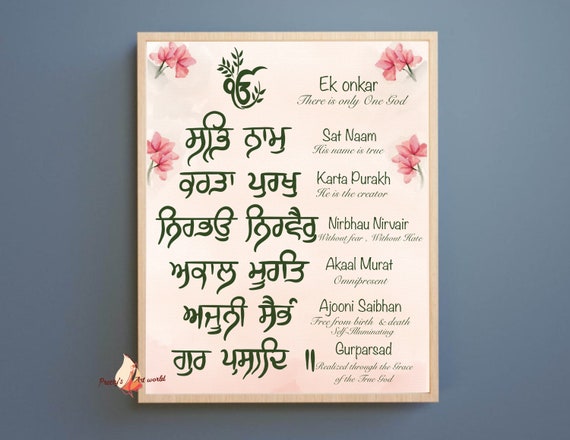
This doesn’t mean you will be given the path directly, because that is just not possible. Guru Prasad: Such an eternal, all-pervading God can only be experienced through the grace of a Sadguru. The last words of the Mool Mantra shed light on this aspect. Having described his name and characteristics, Guru Nanak Dev Ji also gives a way of obtaining or realizing God. He is self-existent and complete and fully capable by himself. God does not take birth as we or any other creatures do, nor does he have a limited life span like us. That is the reason that a Sadguru has always been equated to or at times considered superior to the formless and all philosophies and religions have emphasized the need for a living master.Ījuni: This means beyond the cycle of birth and death. True that God is formless and is the all-pervading energy, but then at times he comes in some form also, for example in the form of a Sadguru. Murat: At times, He is having a form too. Being the sole creator with an all-pervading and omnipresent nature, God has no one to envy and nothing to fear.Īkal: God is timeless, that means he is beyond time and space. Nirbhau, Nirvair: God is without any fear or enmity. But that is not the case, as the word “Purakh” is derived from Sanskrit, where it means “Puri shaite itee purush” – meaning that which is present everywhere.

Generally, this word is confused with the word “Purush”, which means male. The grand universe, whose magnitude we cannot even perceive, is the creation in which God remains immersed. Karta: God is the Creator of all, and therefore resides in everything. The subsequent words of the Mool Mantra define God’s characteristics. The above words of the Mool Mantra ( Ik Onkar Sat) denote the name of God, as defined by Guru Nanak Dev Ji. All its manifestations are transient in nature and as a result keep evolving and dissolving. It was there in the past, it is here now and will always be there. That Supreme energy from where everything is born, is the only eternal truth. It cannot be separated from the creation. Thus, God’s presence as the creator is manifested in every element of creation. Similarly, every great painting is a reflection of its painter. For instance, when we see a dancer getting deeply immersed into her expression, it is said that the dancer and dance have become One. The creator is everywhere and in everything, and cannot be separated from the creation. The second part “kaar” means that this entire creation is immersed in the Creator. The same is confirmed by modern scientific studies, such as the phenomena of Sonoluminescence and the Big Bang Theory.

It signifies that our ever-expanding universe was born from a gigantic explosion in the dormant dark energies, producing an immense cosmic sound, followed by immeasurable amounts of light and heat. The first part of the symbol, “Om” (depicted in several different ways) denotes sound. Its description helps us get the answer to the obvious question that if God is One, then from where he came. Onkaar: As represented in the Mool Mantra using Gurumukhi script, this is a symbol and a combination of two words Om and Kaar. Thus, Guru Nanak Dev Ji puts it as the first word of the Mool Mantra, emphasizing oneness as the only path. And if we start getting into multiple forms, there will always be conflict. This is analogous to the teachings of Advaita Vedanta and other monotheistic philosophies, that everything is a manifestation of a single source of energy irrespective of their outer forms. Ik: There is only one God, the supreme and absolute power that is the cause of all creation, operation and dissolution. Here God is the timeless, formless, all-pervading energy and not any living being bound by time or space. In this verse, Guru Nanak Dev Ji attempts to define the formless God-consciousness, its characteristics and how it can be experienced. This foremost verse of Japji Sahib as well as of Guru Granth Sahib, commonly known as the “ Mool Mantra” comprises the first few words that were recited by Guru Nanak Dev Ji when he came out of his samadhi after attaining enlightenment. Ik onkar satnam karta purakh nirbhau nirvair aakaal murat ajooni se bhang

For detailed understanding, please watch the Japji Sahib Series. These blogs are derived from Sri Guru’s Satsangs on Shri Japji Sahib, & compiled to give a brief interpretation of the Pauri’s by Guru Nanak Dev ji.


 0 kommentar(er)
0 kommentar(er)
